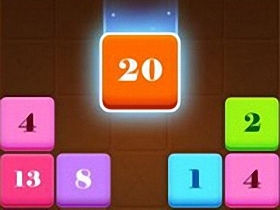

The brick on the left is sinking, the brick on the right is being held in place by you.

That force is less than the weight in air so the brick appears to weigh less in the water (right diagram). To hold the brick in place you must provide the remaining upward force to balance the weight and maintain static equilibrium. The water displaced by a brick weighs less than the brick so the buoyant force cannot cancel out the weight of the brick and it will tend to sink (left diagram). We will do that in the next chapter, but first we should become more familiar with the Buoyant force. By comparing weight and apparent weight, the body density can be determined. In turn, that means that apparent weight is smaller relative to actual weight for bodies of higher density. Taking up the volume means more water is displaced when the body is submerged so the buoyant force will be larger compared to the weight than it would be for a more dense body. Image Credit: “ Archimedes-principle” by MikeRun via Wikimedia CommonsĪ given mass of low density tissue will take up volume relative to the same mass of high density tissue. As a result, the scale reads an apparent weight of only 1 N. The buoyant force cancels out 3 N worth of the objects weight, so the scale only pulls up with 1 N to hold the object in static equilibrium. The buoyant force is equal to the weight of the water displaced, which in this case is 3 N.

Archimedes' Principle states that the buoyant force provided by a fluid is equal to the weight of the fluid displaced.ĭemonstration of Archimedes’ Principle. Measuring the weight and apparent weight of a body allows us to calculate its density because the buoyant force that causes the reduction in apparent weight has a special relation to the amount of water being displaced by the body. The scale must supply less restoring force to counteract weight and maintain static equilibrium when the buoyant force is also helping, therefore the scale will provide a apparent weight reading that is less than the actual weight. We learned in the last chapter that scales measure the force that they are supplying to other objects. A scale will read the weight that it must supply, therefore it will read an apparent weight for submerged objects that is less than the actual weight. The length of the weight arrow is equal to the combined lengths of the force supplied by the scale and the buoyant force.
#BRICKS N BALLS 62 FREE#
In this case we call the arrows vectors and say the forces they represent are vector quantities. The FBD for a person undergoing hydrostatic weighing would look like this: Free body diagram of an object hanging from a scale, submerged in water. The direction of arrows shows the direction of the forces and the arrow lengths shows the size ( magnitude) of the force. This type of diagram is known as a free body diagram (FBD). We can use arrows to represent the forces on an object and visualize how they are balanced or unbalanced.
#BRICKS N BALLS 62 PLUS#
For the case of under water weighing, the buoyant force plus the force provided by the scale must perfectly balance the weight of the object, as long as the object is holding still. For an object to be in static equilibrium, all of the forces on it must be balanced so that there is no net force. When weighing under water we know the buoyant force must be equal to the difference between the weight and apparent weight because the object remains still, which is a state known as static equilibrium. When performing hydrostatic weighing for body composition measurement the apparent weight is often called the under water weight ( ). When a scale is used to weigh an object submerged in water the scale will read the apparent weight. For this reason, the reduced force you need to apply to hold the object is known as the apparent weight. When an object is held still under water it appears to weigh less than it does in air because the buoyant force is helping to hold it up (balance its weight).


 0 kommentar(er)
0 kommentar(er)
